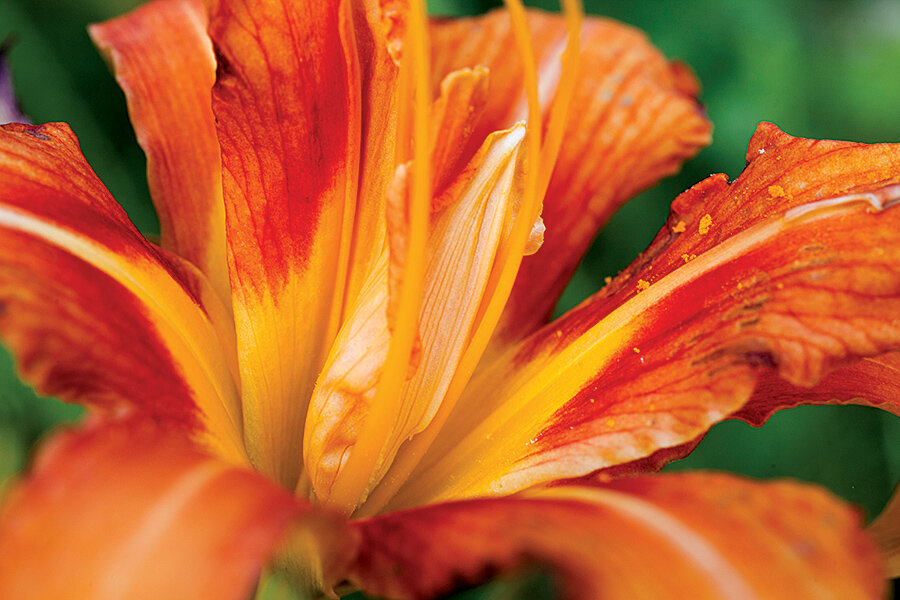Return of the natives
Loading...
When I bought my seaside cottage and at last had a garden of my own, I behaved like a Henry James heroine fascinated by the charm and mystery of the Old World. I filled my garden beds with glamorous foreigners: roses called Zephirine Drouhin, Cecile Brunner, and Madame Isaac Pereire.
I was sure that trusses of heavily scented blooms, entwined with the pale pink blossoms of Comtesse de Bouchaud clematis, would spill over the fence, turning chain link – at least in my mind – to Cotswold stone. Below them, sky blue spires of delphinium and mauve Franz Schubert phlox would nod above masses of silvery lavender Hidcote and Munstead, named for the famous English gardens of their origin. I was not even daunted by the fact that my garden had a lot of shade. That, after all, is where I’d plant clumps of foxgloves – the kind that grow in the Scottish woods.
Perhaps I should have remembered that, in James’s novels, it was the Americans who had to adapt. My foreigners were no exception. They betrayed me as certainly as the European aristocrats betrayed James’s heroines, disappearing just as casually, spurning my attempts to understand them. I cosseted the weak and demanding shoots they sent up; still they sulked and wilted or, most disconcertingly, simply vanished.
The Comtesse de Bouchaud clematis and an anemone called Honorine Jobert flowered and were gone. The roses that prospered were not Zephirine Drouhin or Cecile Brunner, but tough products of the New World with names like Aloha, Autumn Sunset, and, of course, Fourth of July.
And there it was. Like a James heroine, I had to ask who had stuck by me, who had quietly persevered amid fickle neighbors. I had to look again at plants I had dismissed as ordinary, both natives and immigrants with decades of assimilation behind them.
One of the few plants that had survived in the weedy mess that I inherited was a purple hosta. I disliked hostas. Their flower spikes dying from the bottom up looked ratty, their dark green leaves anonymous. I had to learn that hosta foliage, in myriad colors from blue to chartreuse, splashed or striped with white, can light up the shade. Flowers can range in color from white to a dark lavender, and the Royal Standard hosta’s flowers are large and scented. It was like suddenly seeing the boy next door in a new light after someone more exotic had dumped you.
Other survivors were a bed of double orange tiger lilies. I had loved the wild tiger lilies that grew around my mailbox in Vermont, so I let those be, disdaining other day lilies as worthy only of suburban parking lots. But I noted that my tiger lilies were flowering in shade, so I sent for a catalog from a day lily grower in Tennessee. There I found doubles, singles, reblooming, deciduous, evergreen in a dizzying array of colors from pale pinks and creams to red, purple, and near black. And, yes, they would bloom in partial shade. I sent for them at once.
Meanwhile, a Christmas fern rejoiced in the spot the foxgloves had rejected. Plain white, hardy David phlox replaced Franz Schubert; balloon flowers supplanted the delphiniums, and catmint the lavender that had straggled into oblivion.
Then there were the true natives. Their names were homespun: sweet pepperbush, oak leaf hydrangea, Virginia sweetspire, New Jersey tea, even bugbane. Alabama Crimson honeysuckle began to cover the fence.
The natives were not so much dull as subtle. Their colors were paler, their flowers smaller and of a shorter duration, their scent less strong. But they repaid every shovelful of compost, every gallon of water. They spread and bloomed in my acidic, sandy soil, tolerating humid summers and winter’s bitter winds. You have to love a plant that joins you in fighting the odds.
Balloon flowers may not be delphiniums, but they are blue and they bloom and bloom if you remember to deadhead them. Native loosestrife has tiny yellow buttercup flowers and bronze leaves. The Virginia bluebells bloom every spring and the sweet pepperbush fills the late summer garden with its scent of cloves.
When I was told that the Norway maple jammed next to the house was rotten and should come down, I pondered a replacement. Once it would have been Japanese stewartia, parrotia persica, or the hawthorn of English hedgerows. Now, I found myself deciding between eastern redbud and sweetbay magnolia, natives both, as reliable as James’s staunch Americans who came to the rescue of their beglamoured sisters in an alien land.







